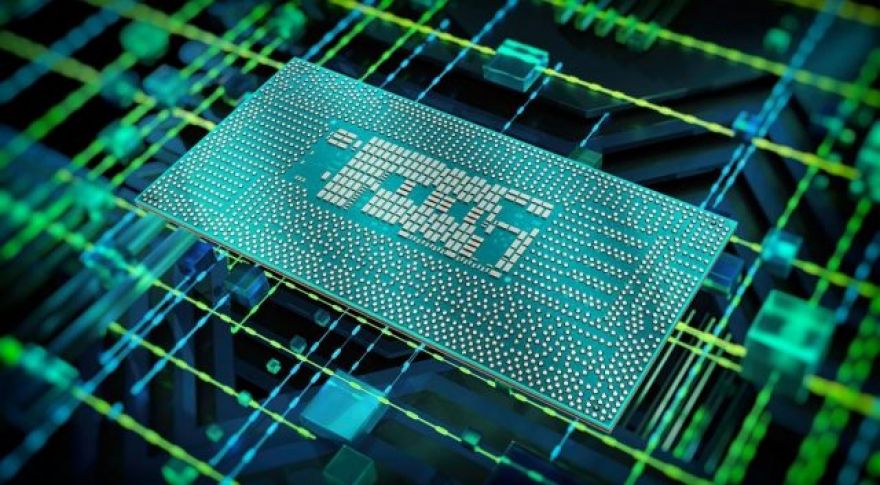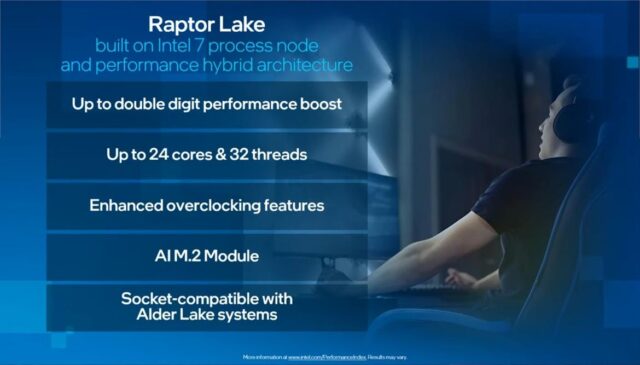
Raptor Lake Gets Up to 20 Percent Performance Boost With DDR5
Even though a lot of us are galavanting around and enjoying summer, Intel is hard at work prepping Raptor Lake for its impending launch. This means more CPUs are getting into the hands of system builders, allowing for more benchmarks to “leak” to the public. The latest numbers to appear online show what kind of performance boost one might see by going from DDR4 memory to DDR5. Like Alder Lake, Raptor Lake supports both memory types, but this is the first time we can recall benchmarks being run on the same motherboard, albeit with different memory. Overall the DDR5 platform saw an almost 20 percent uplift in multi-core performance in Geekbench 5.
The Raptor Lake CPU used in the test was an Intel Core i7-13700K. Although the same motherboard wasn’t used for both tests, since that’s impossible, it’s as close as one could get to that fictional scenario. Asrock offers several Z690 motherboards in its Steel Legend lineup. Some support DDR5, others support DDR4, but little else is different. For this test the Z690 Steel Legend WiFi 6E and WiFi 6E/D5 were used. The DDR4 board was running 3,200MHz modules, while the DDR5 board had DDR5 5,200MHz sticks. The Core i7-13700K is a 16-core, 24-thread CPU with eight efficiency cores, and eight hyper-threaded performance cores.

In Geekbench, the system notched equivalent scores in single-core testing according to . In fact, the DDR5 system was actually a bit slower, but with pre-release hardware one expects oddities. However, in multi-core testing the DDR5 system held a sizable advantage. The DDR4 system notched a score of 16542, with the DDR5 system hit 19811. That’s a 19 percent performance delta, which is notable given all other components were unchanged. It seems the CPU could benefit greatly from more memory bandwidth. At least, that is the case with this one benchmark, but that won’t apply across the board. Historically, AMD CPUs have been more sensitive to memory bandwidth than Intel CPUs. A 19 percent gain from DDR4-3200 to DDR5-5200 in real-world applications would be a substantial improvement.
This sets up an interesting scenario for potential upgraders. With Alder Lake, DDR5 memory was mostly ignored since it was in short supply and prices were much higher than for DDR4. Given the modest uplift the faster memory provided, it was a fool’s errand to choose DDR5 for this generation. With Raptor Lake though, that situation might have changed. DDR5 prices have come down significantly since last year.

Plus, it now appears that Raptor Lake might benefit from faster memory, at least compared to Alder Lake. This will only be true in certain workloads though. For Alder Lake, there was almost no difference between DDR4 and DDR5 in gaming. There is/was a difference in productivity workloads, according to a roundup by . That publication ended up recommending DDR4 for most people because a 32GB DDR5 kit cost the same as the 12900K CPU used for testing.
If there’s a noticeable performance boost, and price are roughly equivalent, it will likely lead to increased adoption of DDR5 in the near future. That’s a good thing, as AMD’s Zen 4 platform will likely be DDR5 only. Intel’s 14th generation CPU, code-named Meteor Lake, will also be DDR5 only, reportedly. This means that Raptor Lake is likely the last platform to support the aging DDR4 standard. Given how long in the tooth it is, a lot of upgraders are eager to upgrade. With Raptor Lake, it might actually make sense to do so.
Now Read: